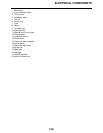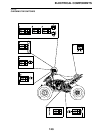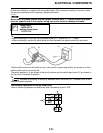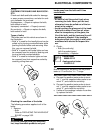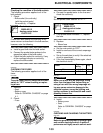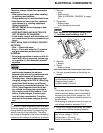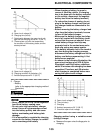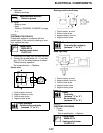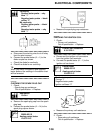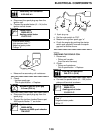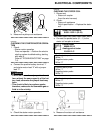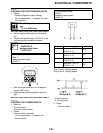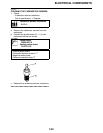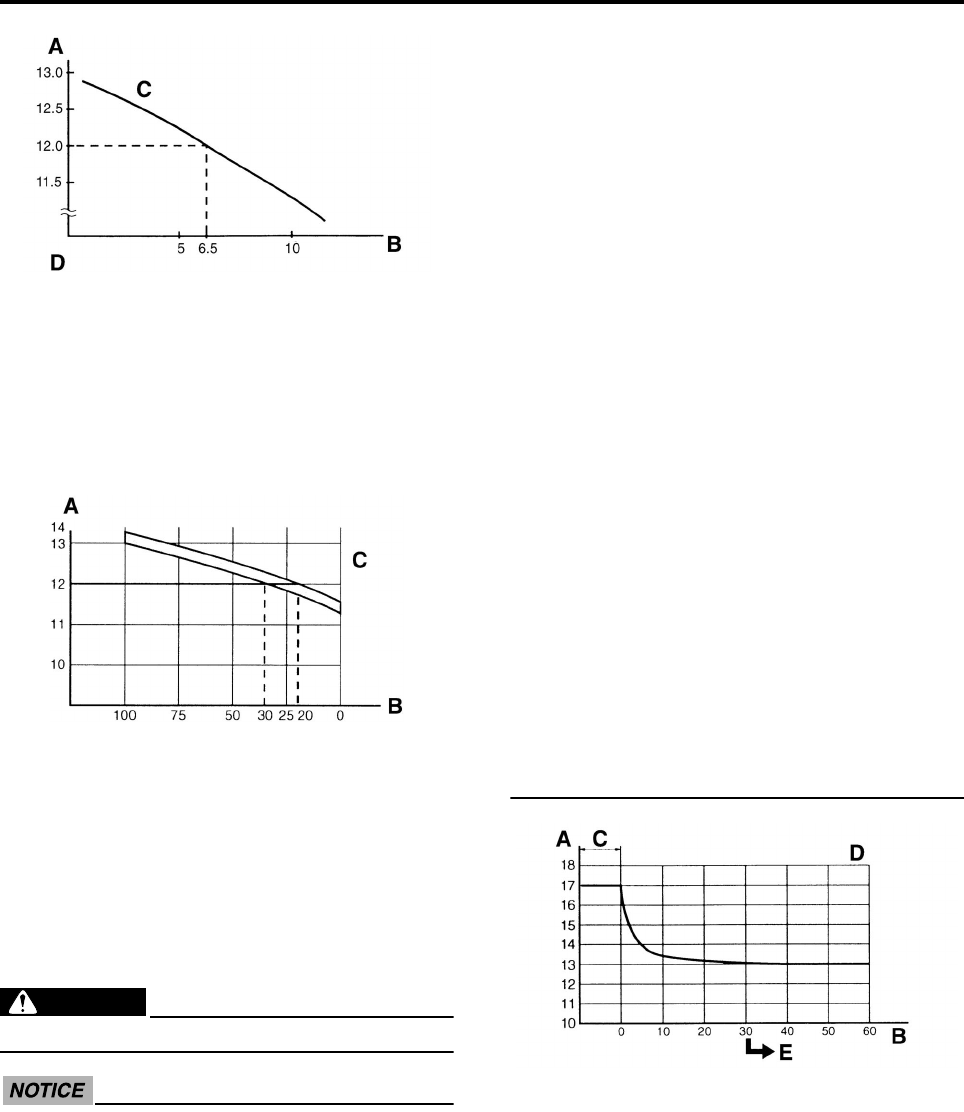
ELECTRICAL COMPONENTS
7-35
▲▲▲▲▲▲▲▲▲▲▲▲▲▲▲▲▲▲▲▲▲▲▲▲▲▲▲▲▲▲
5. Charge:
• Battery
(refer to the appropriate charging method
illustration)
WARNING
EWA13300
Do not quick charge a battery.
ECA4D3F013
• Never remove the VRLA (Valve Regulated
Lead Acid) battery sealing caps.
• Do not use a high-rate battery charger
since it forces a high-amperage current
into the battery quickly and can cause
battery overheating and battery plate
damage.
• If it is impossible to regulate the charging
current on the battery charger, be careful
not to overcharge the battery.
• When charging a battery, be sure to
remove it from the vehicle. (If charging
has to be done with the battery mounted
on the vehicle, disconnect the negative
battery lead from the battery terminal.)
• To reduce the chance of sparks, do not
plug in the battery charger until the bat-
tery charger leads are connected to the
battery.
• Before removing the battery charger lead
clips from the battery terminals, be sure
to turn off the battery charger.
• Make sure the battery charger lead clips
are in full contact with the battery termi-
nal and that they are not shorted. A cor-
roded battery charger lead clip may
generate heat in the contact area and a
weak clip spring may cause sparks.
• If the battery becomes hot to the touch at
any time during the charging process,
disconnect the battery charger and let the
battery cool before reconnecting it. Hot
batteries can explode!
• As shown in the following illustration, the
open-circuit voltage of an VRLA (Valve
Regulated Lead Acid) battery stabilizes
about 30 minutes after charging has been
completed. Therefore, wait 30 minutes
after charging is completed before mea-
suring the open-circuit voltage.
▼▼▼▼▼▼▼▼▼▼▼▼▼▼▼▼▼▼▼▼▼▼▼▼▼▼▼▼▼▼
Charging method using a variable-current
(voltage) charger
a. Measure the open-circuit voltage prior to
charging.
A. Open-circuit voltage (V)
B. Charging time (hours)
C. Relationship between the open-circuit volt-
age and the charging time at 20 °C (68 °F)
D. These values vary with the temperature,
the condition of the battery plates, and the
electrolyte level.
A. Open-circuit voltage (V)
B. Charging condition of the battery (%)
C. Ambient temperature 20 °C (68 °F)
A. Open-circuit voltage (V)
B. Time (minutes)
C. Charging
D. Ambient temperature 20 °C (68 °F)
E. Check the open-circuit voltage.




